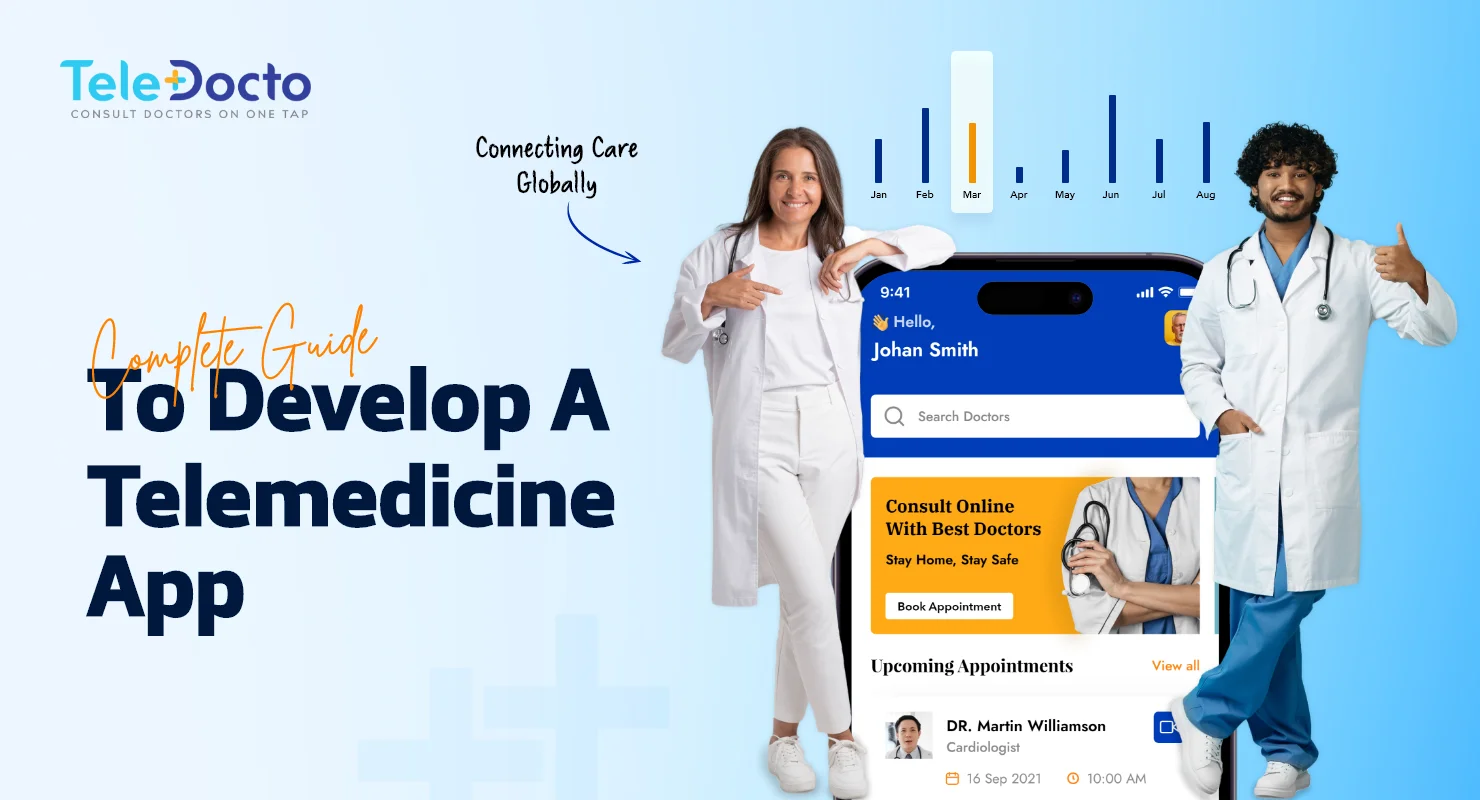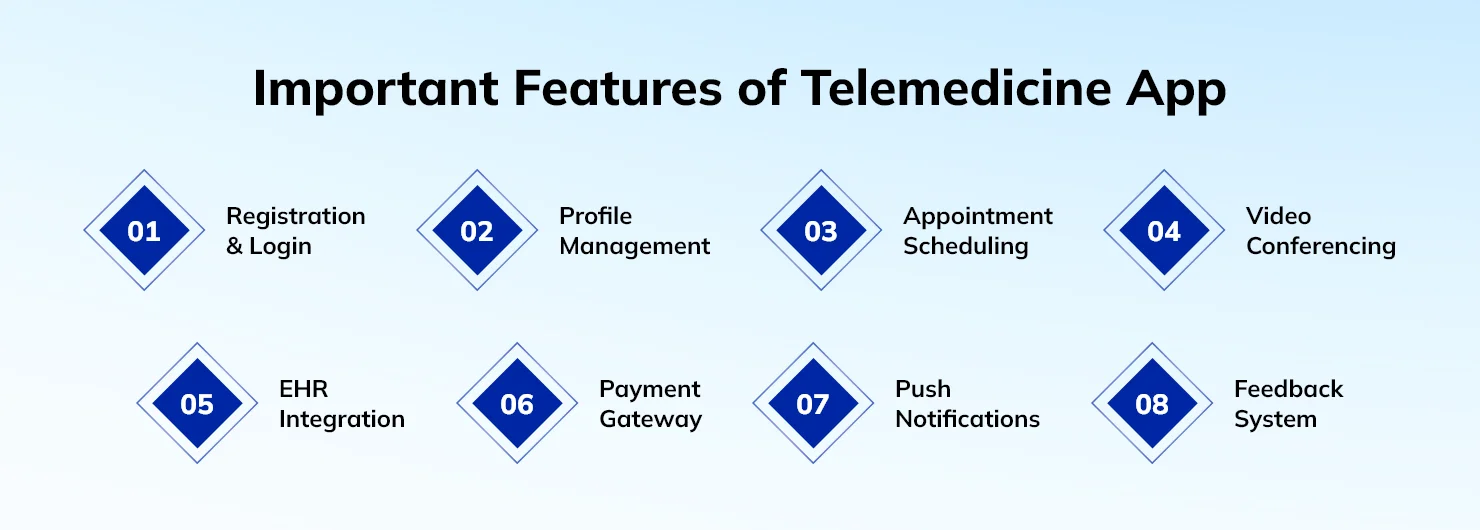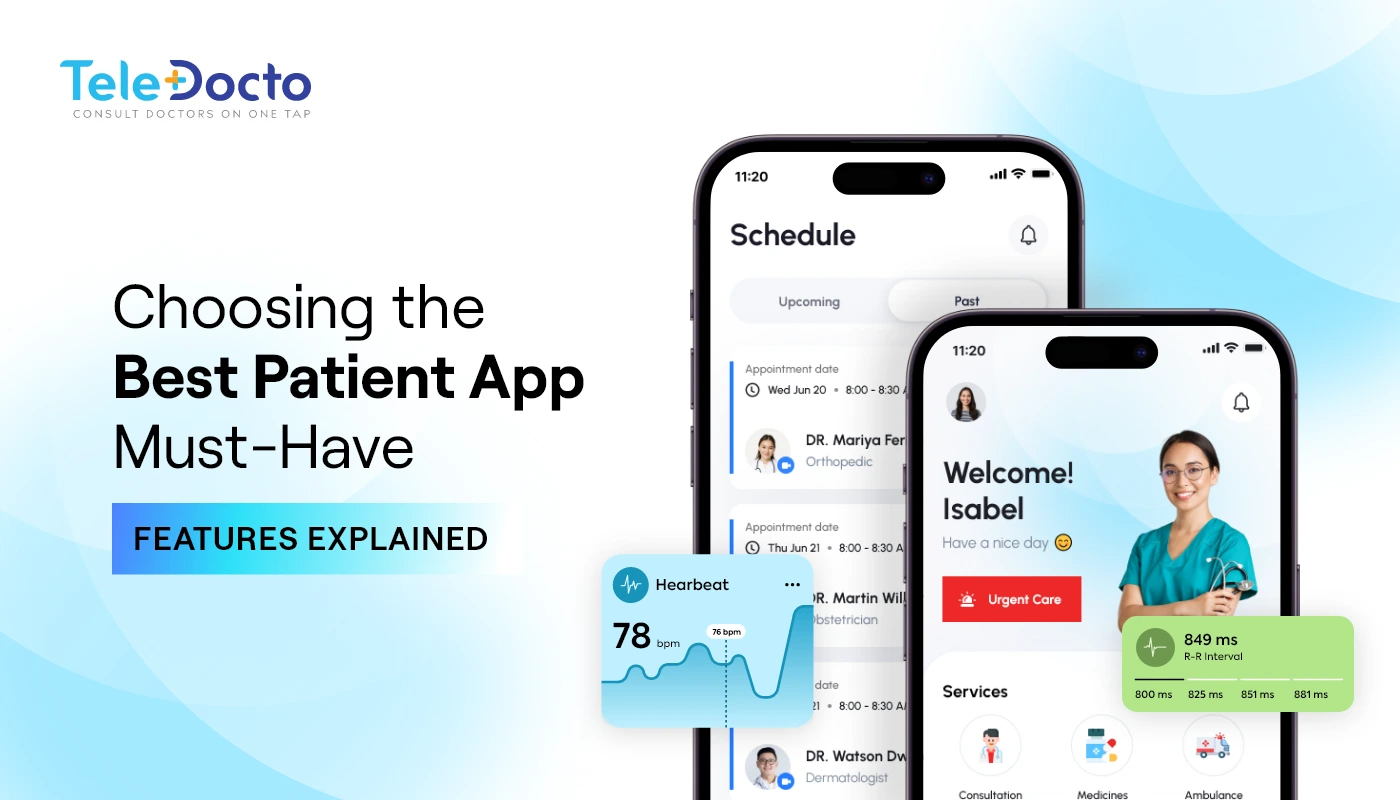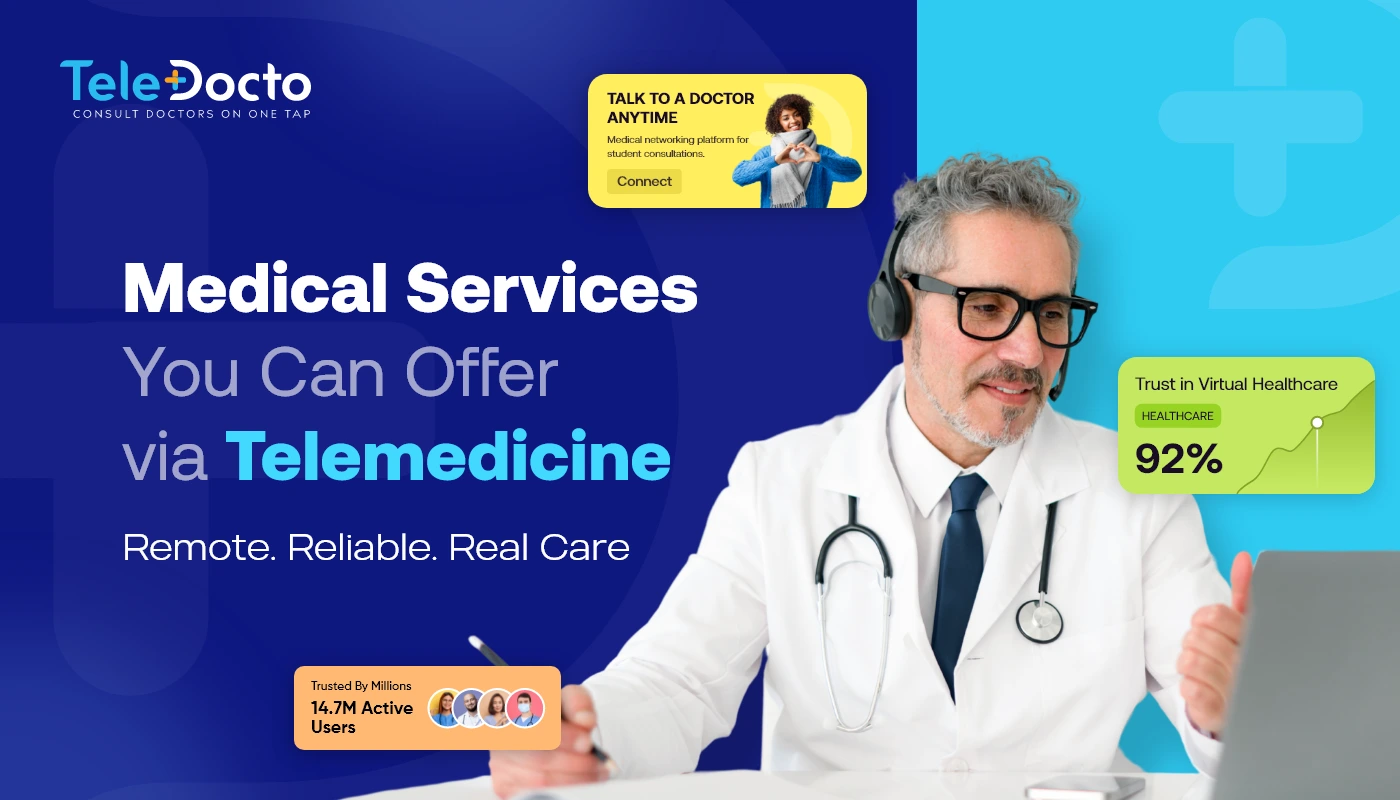
Building a Healthier Future: Ins and Outs of Developing a Telemedicine App
Modern healthcare is experiencing a significant shift in using telemedicine! The telemedicine app innovates traditional methods of delivering patient care and transforms the healthcare sector to a whole new level through video consultations, remote monitoring, and EHR. It is equipped with AI and advanced digital features, making remote medical care a reality.
Developing a telemedicine app requires a mix of tech expertise, knowledge, and understanding of user needs.
Read below the ins and outs of developing a telemedicine app-
Telemedicine App: The Future of Healthcare is Here
Using a telemedicine app, access healthcare from anytime, anywhere! The app links patients with doctors from home, work, or on the go. It connects patients and healthcare service providers virtually, conveniently, and cost-effectively.
This is handy for people in remote areas or with limited mobility. The app removes geographical barriers, making healthcare more accessible. It enables real-time communication through video calls, secure messaging, and appointment reminders, allowing patients to share concerns and get timely advice.
In addition to this, telemedicine apps can manage chronic conditions like heart disease or diabetes well. Patients suffering from these conditions can get regular check-ups, health monitoring, and remote health care data in the comfort of their homes. The best thing is that virtual doctor visits are less costly as compared to in-person visits.
Essential Features of Telemedicine App
In a telemedicine app, prioritize features that improve the user experience of the app. A few such features are mentioned below:

Important Features of Telemedicine App
- User Registration and Authentication
Implement a secure and simple registration process in the application. It can be done via social media logins, email sign-ups, or mobile verification, with optional two-factor authentication. - Profile Management
Patients can input personal info, medical history, and insurance. And, doctors add credentials, specializations, and availability. - Appointment Scheduling
The application should have an easy booking process. The patients should reschedule and cancel appointments, with real-time integration into doctors’ calendars. - Video Conferencing
The telemedicine app must support stable, encrypted video calls to ensure confidentiality and high-quality telemedicine consultations. - EHR Integration
It should be integrated with Electronic Health Records for informed decision-making with patient histories, prescriptions, and lab results. - Payment Gateway
The app should offer secure payment options. It includes credit/debit cards, digital wallets, and insurance claims. - Push Notifications
It must send reminders for appointments, medication schedules, and follow-ups to keep users informed. - Feedback System
This feature allows patients to give ratings according to their experience. Also, the patients can give feedback for continuous service improvement.
Major Considerations While Developing Telemedicine App
Building an efficacious telemedicine app demands careful planning and execution. Have a look at some of the important aspects to consider.
- Target Audience
Are you handling patients with chronic conditions, families seeking pediatric care, or individuals requiring mental health consultations? To use the app effectively, you must identify the definite needs of your target demographic. This will guide the features and functionalities of the app. - UI/UX Design
A user-friendly interface of the app is dominant. The app should be intuitive, easy to navigate, and accessible for users with varying technical skills. - Scalability and Future-Proofing
Design your app with scalability in mind. As your user base grows, the app should adapt and function seamlessly. Consider incorporating functionalities for future advancements in telemedicine technology.
Telemedicine App Should Comply with Regulation
Telemedicine apps must comply with some healthcare regulations. It protects patient data and ensures ethical practices. Each country has particular telehealth regulations that must be followed.
- The app should be HIPAA compliant. It helps mandate data protection and privacy for medical information in the US.
- The app should follow GDPR standards. It must govern data protection and privacy in the European Union.
- The app should strictly abide by FDA Regulations. The FDA regulations are valid for healthcare software and medical devices used in the US.
Conclusion
Telemedicine has upgraded healthcare practices. It lets patients talk to doctors remotely and cut down on in-person visits.
Businesses can get tailored telemedicine app solution like Teledocto. The future looks promising for telemedicine apps, with lots of potential uses. When you choose Teledocto for your healthcare app, you will get a user-friendly design that boosts your business.
Recent Blogs

Telemedicine has changed the way how patients connect with doctors. From routine check-ups to specialist consultations, more people now expect healthcare to be just a click away. But for hospitals, clinics & startups running a telemedicine platform, the real challenge isn’t just about having the technology. It’s about having enough qualified, licensed providers to meet […] Read more

Patients are no longer willing to stand in long queues or make endless calls just to schedule an appointment or check test results. A patient portal app changes this dynamic, putting essential healthcare services right into patients’ hands and making communication and care management seamless. It gives patients the same level of simplicity and ease […] Read more

Going to the doctor’s clinic is often challenging due to long travel distances, waiting times, and crowds there! It clears that the way traditional healthcare delivery was managed, has certain limitations. Enter telemedicine; not as a replacement, but as a modern upgrade to the healthcare department. From a general consult to specialist care, telemedicine has redefined […] Read more